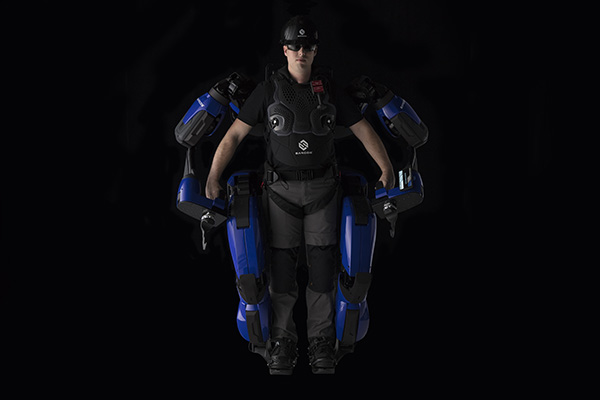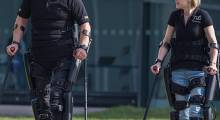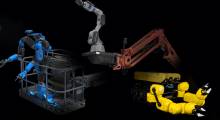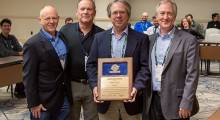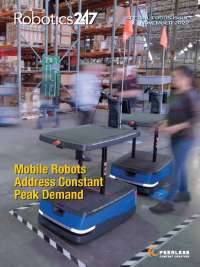The enabling technologies for exoskeletons and other wearable robotics have been steadily improving. However, bringing such systems to market for industrial or therapeutic use poses challenges in scaling up for production. Sarcos Corp. this month marked a significant milestone as it announced a merger with Rotor Acquisition Corp., which will provide $496 million in capital.
Robotics 24/7 spoke with Ben Wolff, chairman and CEO of Salt Lake City-based Sarcos, about the process of teaming up with a special-purpose acquistion company (SPAC), his company's approach to commercialization, and requirements and use cases for industrial exoskeletons.
Anatomy of a SPAC deal
How did Sarcos and Rotor Acquisition find each other? What are the benefits of working with a SPAC?
Wolff: It started with our board talking about what we were going to do about our next capital raise and ramping up commercial production. About the time we were beginning that conversation internally, we approached by a number of diff SPACs that were interested. It's a sign of the times with how many were being created and the kinds of companies they were interested in that had significant momentum and traction.
We saw that in the EV [electric vehicle] space, space travel, and other things that historically were in the purview of larger-stage venture capital investments. SPACs provide an opportunity for the general public to invest in late-stage companies with highly liquid investment that is not tied up for 10 years. That has a real attraction. We'll see the pendulum swing back, but there has never been this kind of interest in enabling people to invest in these innovative companies.
It was great for us to raise a significant amount of capital. The better funded we are, the higher our probability of hitting our targets. We can give our employees confidence that we have staying power and the “dry powder” financially for execution. In addition, customers will know we're not going anywhere.
Sarcos announced this week that executives from Rotor Acquisition, Delta Air Lines, and other companies will be joining its board of directors as it goes public. What does that mean in terms of accountability?
Wolff: I personally recruited all of the people joining us. They subscribe to our vision and are fully supportive. While every business can pivot, our management team is aligned to where we are. My team and I don't need any extra boost from the new board members—we have all the incentives we need for near and future milestones.
Being public does add complexity and cost to being an operating company—there are more regulatory and legal burdens, and we'll be more of a target for people for people who want to be negative. But this will be my third time as the CEO of a public company, and this is true for most of my team at the senior level. Unlike some companies going public, we've got the experience to know how to successfully navigate.
In the past, investors and board members have expressed concerns about robotics companies with both military and civilian applications. Sarcos serves both. Is that an issue?
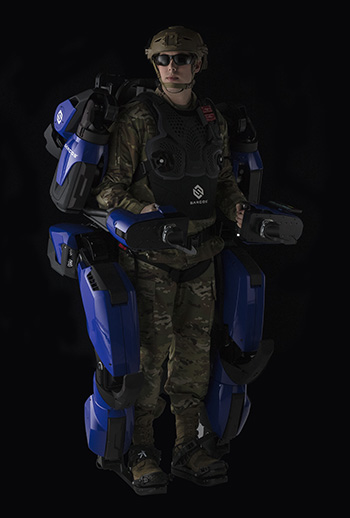
Wolff: There will be no difference in how we have historically dealt with our board and investors. I don't expect to try and perform unnatural acts just to hit quarterly milestones—our stock price will be dependent on broader market trends. Our interest is in long-term, sustainable, high growth.
The separation between civilian and military applications is sometimes a matter of perception. There's a rigorous process associated with being a defense contractor. The legal requirements can be a burden for commercialization, and there can be good reasons to separate them.
We're doing a good job of slaloming these requirements. We're fortunate that our products are the same—which is different from iRobot, which had consumer robots and IED [improvised explosive device removal] robots.
[Editor's note: iRobot decided to spin out Endeavor Robotics in 2016. FLIR Systems acquired Endeavor in 2019, and Teledyne Technologies bought FLIR in January 2021 for $8 billion.]
Our exoskeletons are designed to meet the needs of both government and commercial customers in logistics, maintenance, and repair.
Building better robots
Can you give an example of the technical developments so far?
Wolff: We're working with a customer on stacking boxes on shelves in a warehouse. The shelves are a little more than 5 ft. high, and the exoskeleton's wrists didn't rotate enough for that use case. We try to limit degrees of freedom for weight; we want our systems to be efficient and cost-effective.
We looked at that use case and decided to modify the wrists to lift and rotate back or forward.
As you look to designing for manufacturability, has that changed how you're sourcing components for the Guardian XO?
Wolff: For our original prototypes and experimental moving to the Alpha, we just wanted to prove that the machine could work. Once we proved the case for a highly intuitive, full-body machine, we're now in the “design for excellence” phase, looking at manufacturability, serviceability, and robustness.
Part of that is how to reduce total number of components. I expect there will be changes. We're just going through that process now, as it's incumbent to bring costs down.
How much have trade disruptions and the COVID-19 pandemic affected Sarcos' supply chain and testing?
Wolff: Not much because we're not yet producing in volume. We had some challenges with some custom fabricators for components that weren't off the shelf. We try to use SMEs [small and midsize enterprises] around the world, but if someone had COVID, a small company would have to shut down completely.
We never completely shut down ourselves. There's no question that the pandemic slowed work—it's hard to develop complex systems without people, and it had as much as a 50% impact on productivity. We're just reopening our facilities to a significant number of people this week.
Sarcos also provides other industrial systems, including the Guardian S for remote inspection and surveillance, the Guardian GT mobile manipulator, and the Guardian XT for teleoperation. How are they developing?
Wolff: The Guardian XT is essentially the upper body of our exoskeleton with some extra dexterity, mounted on rolling or telescoping bases. It's a fascinating opportunity to leverage our technology. Humans have all the perception, and it makes for a very natural, intuitive experience.
We did a demonstration of power saws in a bucket truck for trimming trees around utility and power lines. Our teleoperated system can enhance safety, lower cost, and increase the speed at which power-line clearing can be done.
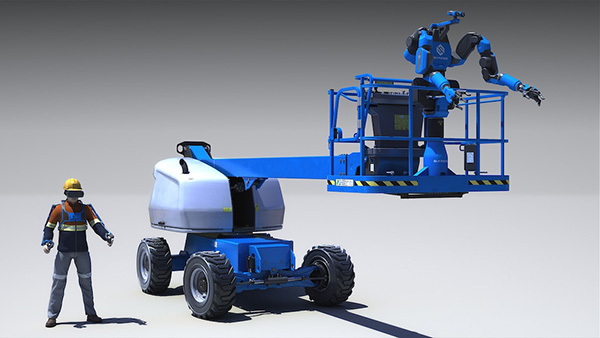
Robotics 24/7 recently covered the ANA Avatar XPRIZE, which also focuses on teleoperation. Did you consider competing?
Wolff: We looked at participating but decided to keep our heads down on our core business. It's easy in robotics to get distracted, and we're focused on bringing our exoskeletons to markets such as warehousing and construction.
Commercializing the Guardian exoskeleton
How is Sarcos proceeding in its go-to-market strategy for the Guardian XO?
Wolff: At CES 2020, we showed our Alpha model with Delta, right before the pandemic hit. We started deploying it, but most of our customers unfortunately closed their facilities to third parties. Some of our units got trapped in facilities, and we had to go back to get them months later.
We brought them back, took the learnings, and conducted extensive ongoing testing. There's a lot of internal testing and validation.
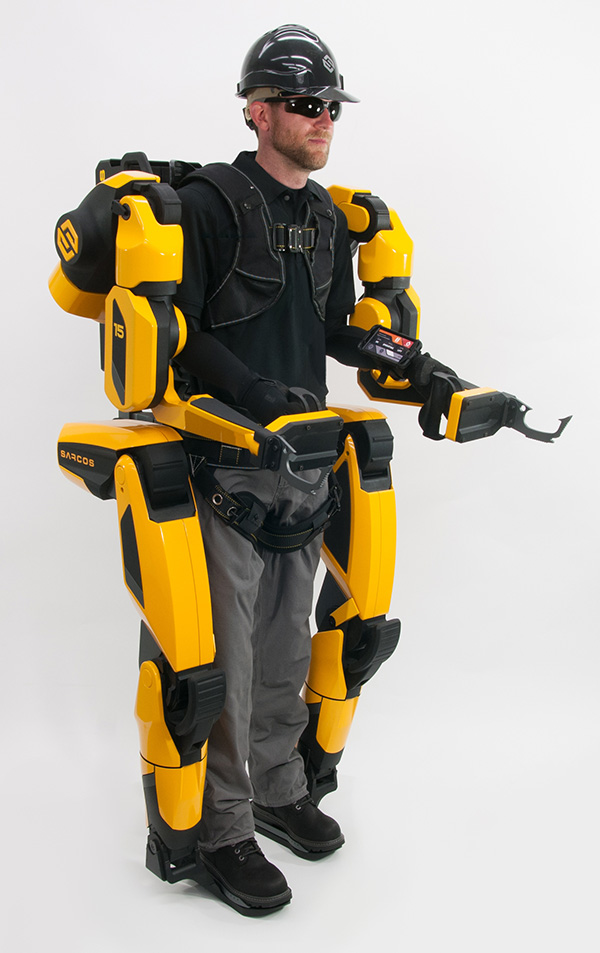
We're completing the design of the Beta model and are starting assembly. We'll test the first ones ourselves this summer, and then we'll start making small numbers to be deployed at pilot programs with Fortune 100 customers.
We'll take those learnings in Q4 and feed them into our MVP product for summer 2022. The long time between iterations is because of safety. We're putting a human into a powerful wearable robot, so we're looking at the furthest-out corner cases.
Like exoskeletons, we've seen a lot of developments lately in legged robots. Does the interest in commercial applications reflect a maturity or greater understanding of robotics in spaces designed for humans?
Wolff: We'll see a continued explosion of what they're capable of doing. The power consumption of legged robots was a major limiting factor.
Another limitation is around teleoperation and autonomous navigation. You can overcome the power issue, but you still have the challenge of machines moving around in dynamic environments.
With AMRs [autonomous mobile robots] and other types of machines that are wheeled, they're mostly deployed in highly structured environments, like warehouses. They can be programmed, but the artificial intelligence for managing deviations is not intended for highly dynamic, unstructured environments.
In the case of Sarcos' powered exoskeletons, the robot is an extension of human capabilities. This is required for applications where human intelligence is required. We feel that human judgment and decision-making will still be essential for a long time to come.
How will the SPAC funding help Sarcos in the near future?
Wolff: Rotor Acquisition gives us the resources to hire the team we need to continue ramping up. We assumed that we'd be getting funding when we set our timeline.
We have a ton of job openings right now. We're looking for everybody from software, electrical, and mechanical engineers to supply chain people and IT systems to support our robotics-as-a-service [RaaS] offerings.
About the Author
Follow Robotics 24/7 on Linkedin
Article topics
Email Sign Up

